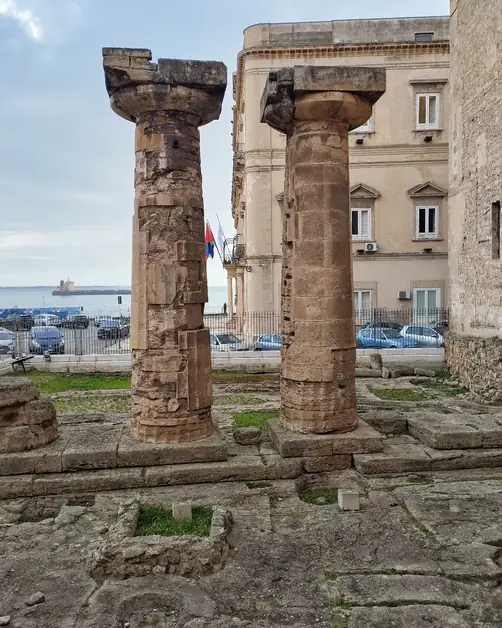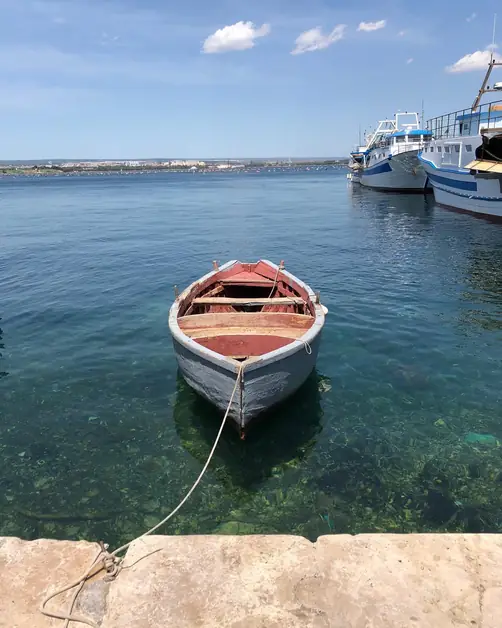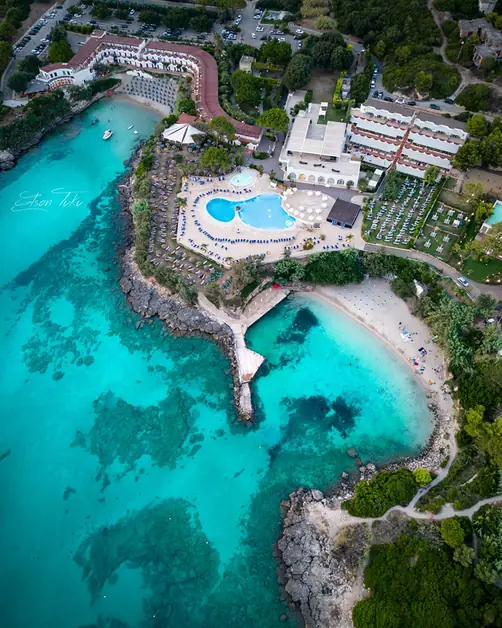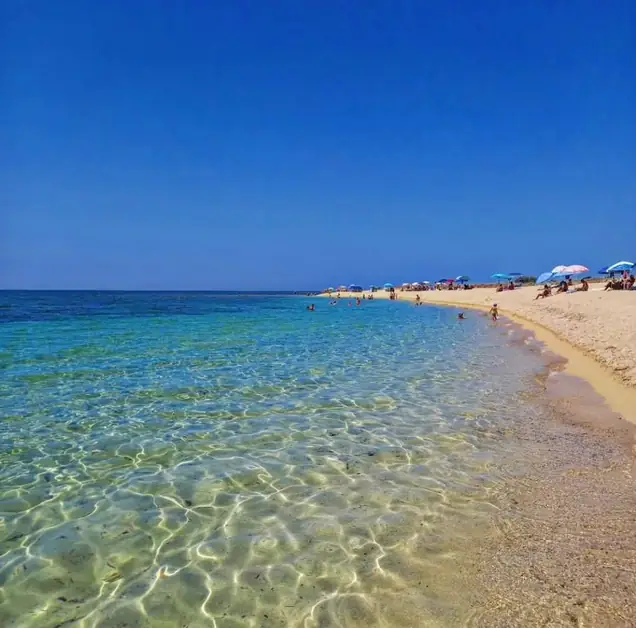Discover the Doric Temple of Taranto and its history
Explore the Doric Temple of Taranto, a symbol of Magna Graecia.

What is the Doric Temple of Taranto?
The Doric Temple of Taranto is the oldest temple of Magna Graecia in Italy, dating back to the 6th century BC. Today, two imposing Doric columns stand tall, narrating the grandeur of the Greek city of Taras. Walking in the old town, in front of these columns, one experiences a unique sensation: it feels almost like traveling back in time.
Where is the Doric Temple of Taranto located?
The temple is located in the heart of the Old Town Island of Taranto, along Via Duomo, just a few steps from the sea. Its position is truly picturesque: on one side, you can admire the columns, and on the other, the panorama of the Mar Grande with the Aragonese Castle in the background. A must-see stop for those wanting to discover the ancient beauties of the city.
Why visit the Doric Temple of Taranto?
Visiting the Doric Temple means not just seeing ancient columns but experiencing something profound. Stopping in front of these ruins, observing the traces of stone blocks, imagining the rituals that took place here over two thousand years ago, conveys an authentic emotion. It is not just a monument but a living fragment of history.
What is the history of the Doric Temple of Taranto?
The temple was built in the 6th century BC by Spartan colonists who founded Taras. It was likely dedicated to a deity such as Poseidon or Apollo. Originally, it was a large building with numerous columns, but today only two stone giants remain, silent witnesses of a glorious past. The history of the temple is intertwined with that of Taranto, a city that was one of the most important of Magna Graecia.
What does it feel like to stand in front of the Doric columns of Taranto?
The experience is astonishing: the columns appear imposing, almost out of scale compared to the modern buildings surrounding them. Up close, you can see the fractures, the marks of time, the surfaces worn by wind and salt. Walking around, you can hear the sound of the sea, creating a contrast between past and present that leaves one speechless.
How much time is needed to visit the Doric Temple?
The visit is brief but intense. In just a few minutes, you can admire the columns, read the informative panels, and take unforgettable photographs. However, many tourists choose to linger longer, sitting on a bench to watch the sunset behind the sea as the columns take on golden hues.
What nearby attractions can be visited next to the Doric Temple?
Just a few steps from the temple, there are other attractions not to be missed. The Aragonese Castle of Taranto, with its towers by the sea, offers a fascinating guided tour. Nearby is the National Archaeological Museum of Taranto (MARTA), which houses extraordinary artifacts from Magna Graecia, including gold and ceramics. Strolling along Via Duomo, you can also discover baroque churches and picturesque corners of the old town.
When is the best time to see the Doric Temple of Taranto?
The best time to admire the columns is at sunset when the warm light illuminates the stone and the sea becomes a golden mirror. Even in the evening, with artificial lighting, the atmosphere is enchanting. In every season, the temple offers different emotions: in summer with the clear sky and blue sea, in winter with the wind blowing through the ruins.
Can you photograph the Doric Temple of Taranto?
Yes, and it is one of the most beautiful experiences. The columns lend themselves to spectacular photos, both with the sea in the background and with the details of the surfaces worn by time. Many tourists choose to take panoramic photos that include the Aragonese Castle or the streets of the old town.
Why is the Doric Temple so important for Taranto?
The temple represents the roots of the city. It is a symbol of the connection with Magna Graecia and the greatness of the past. Taranto is not just sea and beaches, but also culture, history, and archaeology. The Doric columns are an icon that unites identity and collective memory.




